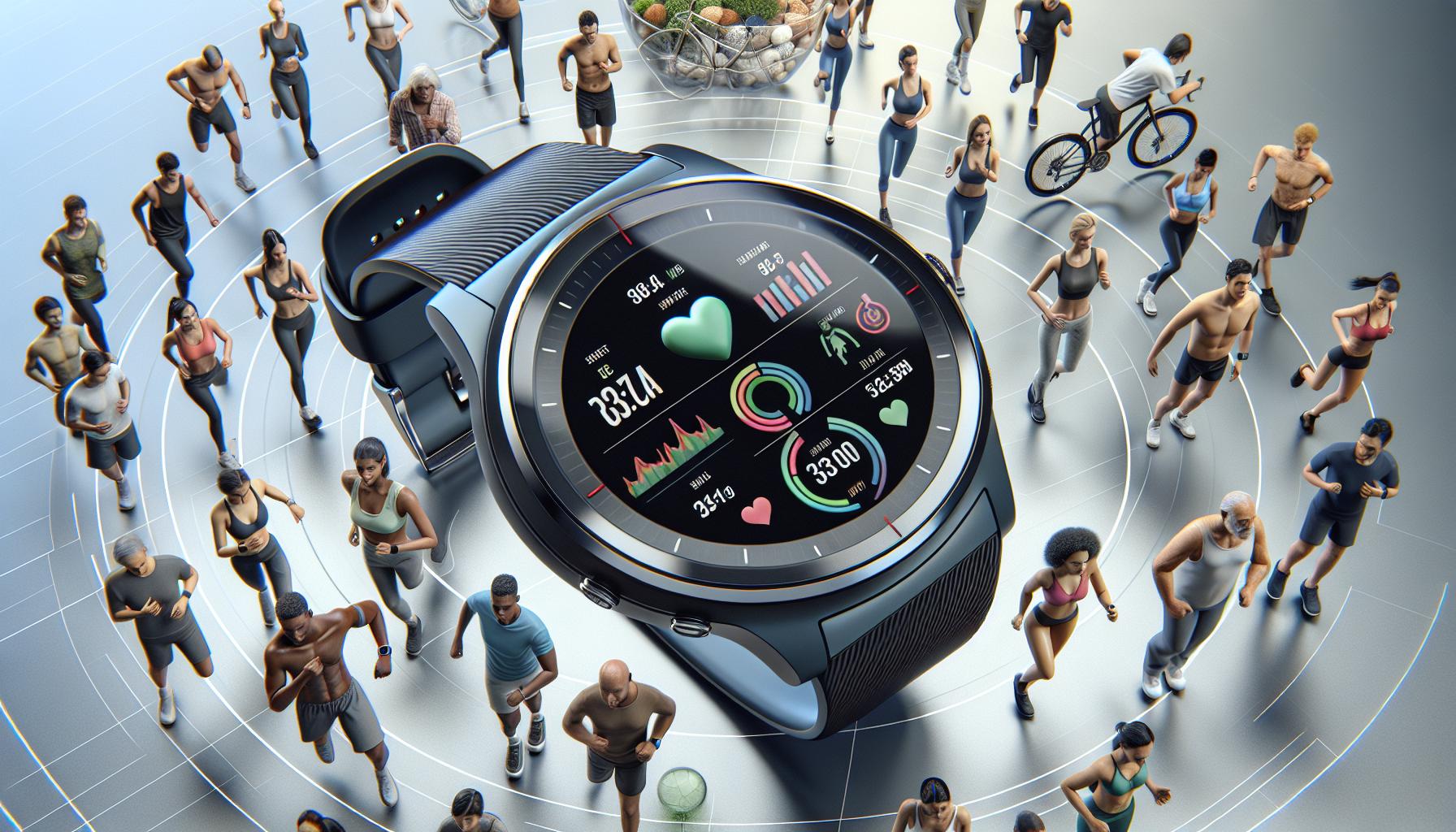In a world where wearing technology is as common as wearing shoes, wearable tech companies are strutting their stuff like they own the runway. From smartwatches that can tell you when to breathe (seriously, who needs that?) to fitness trackers that remind you to move when you’re one too many Netflix episodes deep, these gadgets are here to revolutionize how we live our lives.
With the ability to monitor health, track fitness goals, and even keep you connected while you’re on the go, wearable tech is no longer just a trend—it’s a lifestyle. As these companies innovate and push boundaries, they’re not just selling products; they’re selling a vision of a smarter, healthier future. So, buckle up and get ready to dive into the world of wearable tech, where convenience meets cutting-edge innovation, and your wrist might just become your new best friend.
Wearable Tech Companies
Wearable tech companies focus on creating devices that improve personal health and enhance daily living. Smartwatches dominate the market, offering features such as heart rate monitoring, GPS tracking, and messaging capabilities. Fitness trackers play a crucial role in the fitness industry, enabling users to monitor their activity levels and sleep patterns.
Leading players include Apple, Fitbit, and Garmin. Apple’s smartwatches integrate seamlessly with iOS devices, providing a comprehensive ecosystem for users. Fitbit specializes in fitness-oriented wearables, emphasizing health tracking and activity monitoring. Garmin excels in navigation and sport-focused devices, appealing to outdoor enthusiasts.
Emerging companies also contribute to the landscape, fostering innovation. Companies like Whoop focus on providing detailed performance insights, while Oura targets sleep quality and recovery metrics with its smart ring. Collaboration among technology firms and health organizations drives advancements, leading to new features and improved user experience.
Global statistics underline the growing popularity of wearable devices. In 2022, shipments reached 444 million units, reflecting a 10% increase from the previous year. Predictions anticipate a compound annual growth rate (CAGR) of 15% through 2026, indicating sustained interest and investment.
Investment in research and development fuels progress in wearable technology. Companies increasingly explore integration with artificial intelligence and machine learning. Printable flyers can be an effective way to educate consumers about the latest advancements and features in wearable tech. Improved algorithms enhance data analysis, providing users with actionable insights pertaining to their health and fitness.
The realm of wearable tech companies continuously evolves, reflecting trends in consumer demand and technological advancement. As companies innovate, the lines between technology and personal well-being blur, creating a future ripe with possibilities.
Key Players In The Industry

Wearable tech companies play a crucial role in the evolution of personal technology. They drive innovation and enhance everyday life through connected devices.
Established Leaders
Apple leads the smartwatch segment with its Apple Watch, integrating health monitoring features like heart rate tracking. Fitbit specializes in fitness trackers, emphasizing activity levels and sleep quality. Garmin focuses on multisport capabilities, offering dedicated GPS functionalities for athletes. Samsung’s Galaxy Watch combines smartwatch features with fitness tracking, appealing to a broad audience. These leaders dominate the market due to their consistent quality and user-friendly designs.
Emerging Startups
Whoop offers a subscription model for its performance tracker, targeting serious athletes with detailed insights on recovery and strain. Oura specializes in sleep tracking with its smart ring, providing personalized health data and insights for better wellness. Amazfit delivers affordable smartwatches and fitness trackers that attract budget-conscious consumers. This variety in new startups promotes healthy competition, driving advancements across the wearable tech landscape. Each of these newcomers contributes unique innovations that enhance the user experience.
Innovations And Trends

Wearable technology continues to transform health and fitness, making monitoring more accessible and accurate. Smartwatches and fitness trackers provide real-time data on heart rate, calories burned, and sleep quality. These features allow users to set fitness goals and track their progress effectively. Devices from companies like Fitbit and Garmin enhance performance by incorporating advanced sensors and algorithms. Wearables increasingly collect data to help manage chronic conditions such as diabetes and hypertension.
Health And Fitness Monitoring
Innovative health tracking features integrate seamlessly into wearable devices. Heart rate variability and stress levels are now standard metrics provided by many smartwatches. Fitness trackers from Whoop and Oura specialize in performance insights, benefiting athletes with tailored recommendations. These devices help establish healthy habits through notifications and guided workouts. Enhanced analytics offer personalized feedback to improve overall wellness. Users gain valuable insights into their fitness journeys, thus advocating for a proactive approach to health.
Smart Clothing Developments
Smart clothing is an emerging sector in wearables, transforming traditional apparel into tech-enabled instruments. Companies like Athos and Hexoskin lead the charge with garments that monitor vital signs during workouts. Sensors embedded in fabrics relay heart rate, muscle activity, and breathing patterns in real time. This technology allows athletes to optimize their training regimens based on detailed physiological data. Enhanced comfort and flexibility hold significant appeal for users, making smart clothing ideal for various activities. Wearable technology companies are continually innovating, resulting in the rapid evolution of smart textiles.
Challenges Faced By Wearable Tech Companies

Wearable tech companies encounter various challenges that impact their growth and user adoption. Addressing these issues is crucial for maintaining relevancy in a competitive market.
Market Competition
Intense competition characterizes the wearable tech industry. Numerous brands vie for consumer attention, leading to rapid innovation cycles. Established companies like Apple and Fitbit face threats from emerging players such as Whoop and Oura. Competitive differentiation hinges on unique features, design, and pricing strategies. Consumers often compare functionality and affordability among multiple options. Fragmentation among different operating systems and ecosystems contributes further to the challenge. Market saturation complicates product launches, making it essential for companies to innovate consistently.
Privacy Concerns
Privacy concerns represent a significant challenge for wearable tech companies. Users share sensitive health data when utilizing fitness trackers and smartwatches. Managing this information securely helps build consumer trust. Many individuals express apprehension about data collection and potential misuse. Compliance with regulations such as GDPR becomes non-negotiable for manufacturers. Transparency regarding data usage is vital for reassuring users. Companies must implement robust security measures to protect personal information while still providing meaningful insights. Balancing user privacy with personalized experiences forms a critical aspect of developing future wearable technologies.
Future Outlook
Growth in the wearable tech sector promises continued advancements and widespread adoption. By 2026, statistics suggest a significant increase in global device shipments, driven by innovation and consumer demand. Companies are investing heavily in artificial intelligence and machine learning to enhance functionality and personalization of wearable devices.
Emerging trends signal a shift toward smart clothing, allowing for seamless integration of technology into everyday apparel. Athletes benefit from garments that monitor vital signs and provide real-time feedback, optimizing training regimens. Organizations like Athos and Hexoskin lead this category, showcasing how traditional athletics can evolve with technology.
Privacy concerns remain a top challenge for the industry. Consumers express increasing awareness about how their health data is collected and used. Trust becomes essential as companies develop robust security measures to protect sensitive information. Transparency in data management fosters consumer confidence, which is vital for long-term growth.
Market competition intensifies among established brands and budding start-ups. Apple and Fitbit maintain their market dominance by continuously innovating their product offerings. Emerging players like Whoop and Oura carve specific niches, focusing on performance tracking and sleep health. Adapting to trends in consumer preferences is crucial for all companies to maintain relevance.
Furthermore, the integration of health management features into wearables transforms user experiences. Devices now provide insights on heart rate variability and personalized recommendations. Such innovation empowers users to take control of their health and well-being, promoting proactive wellness strategies.
Overall, the future of wearable technology looks promising, characterized by advancements that enhance user experience and prioritize health monitoring.

